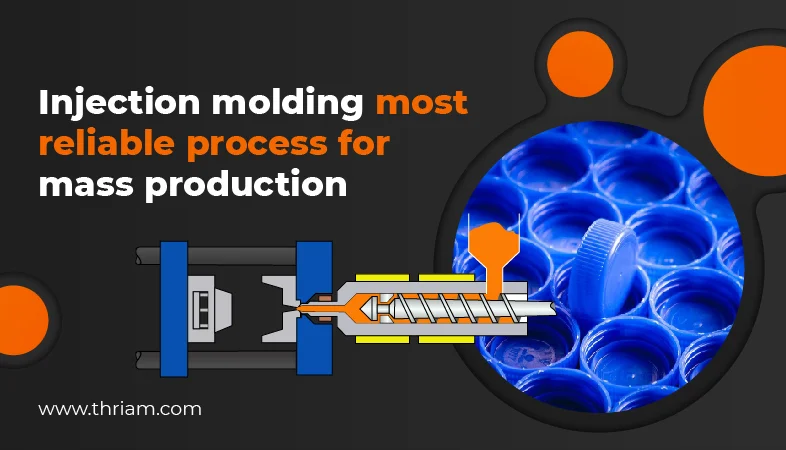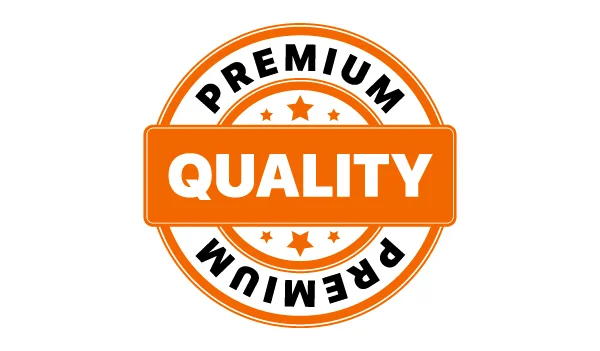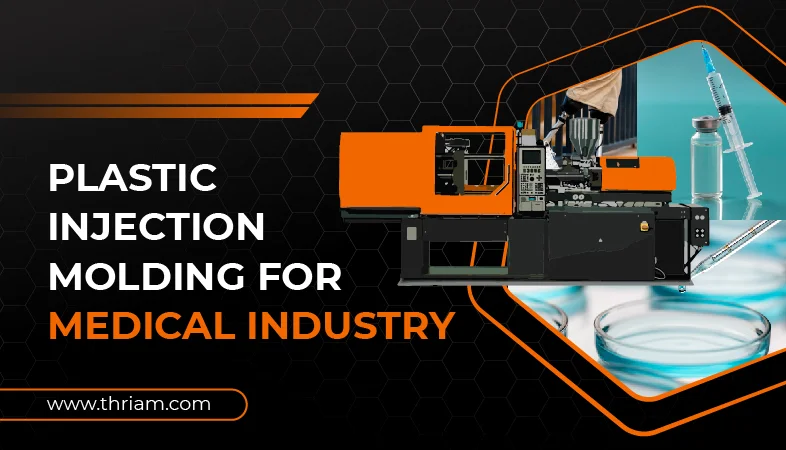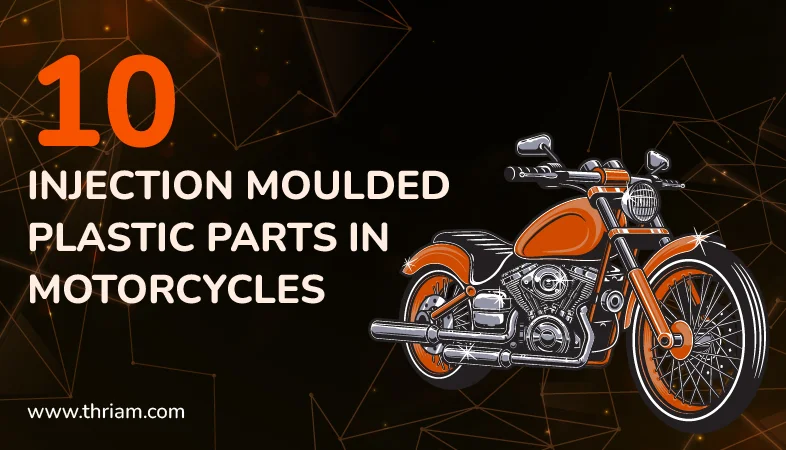Driving Innovation and Cost Savings: How Injection Molding Revolutionizes Mass Production

In the competitive world of manufacturing, driving innovation and achieving cost savings are key goals for companies looking to stay ahead of the curve. One method that has revolutionized mass production is injection molding. This cutting-edge technique has transformed the way products are made, offering numerous advantages that not only enhance innovation but also deliver cost savings. In this blog, we will explore how injection molding has become a game-changer, driving innovation and enabling companies to achieve significant cost savings in the realm of mass production.
What is injection molding? (For someone who is new to injection molding)
Injection molding is a widely used manufacturing process that involves the production of plastic parts by injecting molten material into a mold cavity. This versatile technique allows for the creation of a variety of complex shapes and designs, making it a popular choice across multiple industries.
The process of injection molding begins with the preparation of the material, typically thermoplastic polymers, which are melted and injected into a mold under high pressure. The mold, usually made of steel or aluminum, is precisely designed to reflect the desired shape and features of the final product.
Once the molten material is injected into the mold, it rapidly cools and solidifies, taking on the shape of the mold cavity. After the material has cooled sufficiently, the mold is opened, and the newly formed plastic part is ejected. This cycle is repeated continuously, allowing for the mass production of identical parts.
Furthermore, injection molding is compatible with a wide range of materials, allowing manufacturers to select the most suitable material for their specific needs. This versatility, combined with the ability to control material properties such as strength, flexibility, and color, makes injection molding suitable for various industries, including automotive, electronics, healthcare, and consumer goods.
In this blog, we will explore the benefits of injection molding, its impact on mass production, and why it is crucial for meeting the demands of various industries.
High efficiency:

Injection molding is exceptionally efficient when it comes to mass production. The process begins with the creation of a precise mold, which allows for consistent and accurate replication of each part. This repeatability ensures that every piece produced is identical, meeting the required specifications and quality standards. Furthermore, injection molding machines can run continuously, enabling high production volumes with minimal downtime. The speed of the process, combined with automated ejection and packaging systems, further enhances efficiency, making it possible to meet tight deadlines and scale up production rapidly.
Cost savings:

Injection molding allows for the production of plastic parts in large quantities at a lower cost per unit. The initial setup cost may appear high, but once the molds are created, the manufacturing process becomes highly economical. The high-speed and automated nature of injection molding further contribute to cost savings, as minimal human intervention is required. Additionally, the ability to use various raw materials, such as recycled plastics, further reduces material costs, making it an environmentally friendly choice.
Complexity and Design Flexibility:

Injection molding offers immense freedom in terms of part complexity and design flexibility. The use of molds allows for the creation of intricate shapes and intricate details that would be challenging, if not impossible, to achieve using other manufacturing methods. Additionally, injection molding allows for the incorporation of multiple materials or additives, which enhances the functionality of the parts produced. This versatility makes injection molding suitable for a wide range of industries, including automotive, electronics, medical, and consumer goods.
Material versatility:
Injection molding is compatible with a wide range of materials, including thermoplastics, elastomers, and even some metals. This versatility allows for the production of diverse plastic parts with varying properties, catering to different industry needs.
Consistency and quality:

Injection molding ensures high-quality parts with consistency throughout the production process. The controlled environment, precise injection pressure, and temperature control enable the production of parts with minimal defects, such as warping, sink marks, or voids. The ability to continuously monitor and adjust the process parameters further enhances quality control. As a result, injection molding provides reliable and consistent parts, meeting the strictest industry standards and customer expectations.
Waste reduction:
Injection molding helps minimize material waste during the production process. The precise control over the amount of material injected into the mold results in minimal scrap material. Additionally, any leftover material can be melted and reused, reducing environmental impact and cost.
Scalability:
Injection molding is highly scalable, allowing for the rapid production of large volumes of parts. Once the molds are created, production can be easily scaled up or down, depending on demand, by simply adjusting the number of machines and molds in operation. Additionally, the setup time for injection molding is relatively short, which facilitates quick product turnaround and reduces time-to-market. This advantage is critical for industries with changing market trends, enabling them to respond promptly to customer needs and remain competitive.
Conclusion
Injection molding offers significant advantages for cost-effective and efficient mass production of plastic parts. Its cost-effectiveness, efficiency in mass production, design flexibility, high quality, and scalability make it an ideal choice for various industries. With the ability to produce consistent parts, injection molding ensures that each product meets stringent quality standards. As technology advances, injection molding is likely to continue evolving and playing a pivotal role in meeting the ever-growing demands of mass production.
Bonus content
Five key industry sectors where injection molding finds wide-ranging use:
Automotive Industry: Injection molding plays a crucial role in the automotive sector. It is used to manufacture interior and exterior parts such as dashboards, door panels, bumpers, and trim components. The design flexibility of injection molding allows for intricate and precise parts, while the high production speed helps meet the demands of mass production in the automotive industry.
Electronics Industry: Injection molding is extensively used in the electronics sector to produce components such as connectors, enclosures, and housings. With the ability to produce parts with precise dimensions and complex geometries, injection molding ensures that electronic devices are not only functional but also aesthetically pleasing. The process also enables the integration of features like snap fits, inserts, and undercuts, enhancing the functionality of electronic products.
Medical Industry: Injection molding is widely employed in the medical field to manufacture a range of products, including syringes, IV components, medical devices, and surgical instruments. The use of injection molding ensures the production of sterile and high-quality medical components that are crucial for patient safety. Additionally, the ability to use materials with specific properties, such as biocompatibility and resistance to chemicals, makes injection molding an ideal choice for medical applications.
Consumer Goods Industry: Injection molding is heavily utilized in the consumer goods sector for the production of everyday items such as toys, packaging, household appliances, and personal care products. The process allows for efficient and cost-effective mass production of these items, ensuring their availability in the market at affordable prices. The design flexibility of injection molding also enables the creation of attractive and ergonomic consumer goods.
Aerospace Industry: In the aerospace sector, injection molding is used to manufacture lightweight and high-strength components. It enables the production of precision parts with complex geometries, ensuring the optimal functioning of aircraft and spacecraft. The ability to use materials with excellent mechanical properties, such as high-temperature resistance and strength-to-weight ratio, makes injection molding a valuable technique in the aerospace industry.



